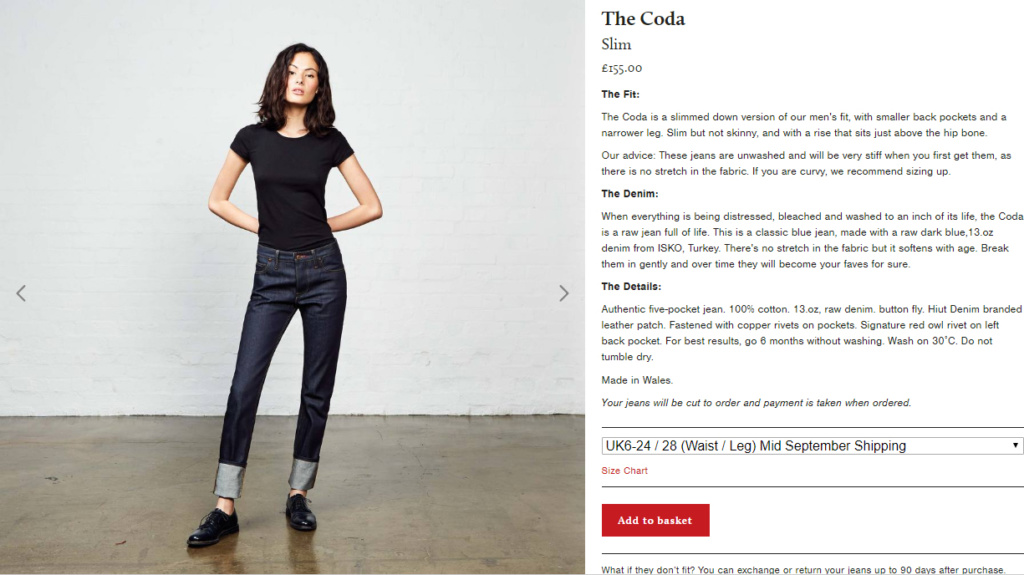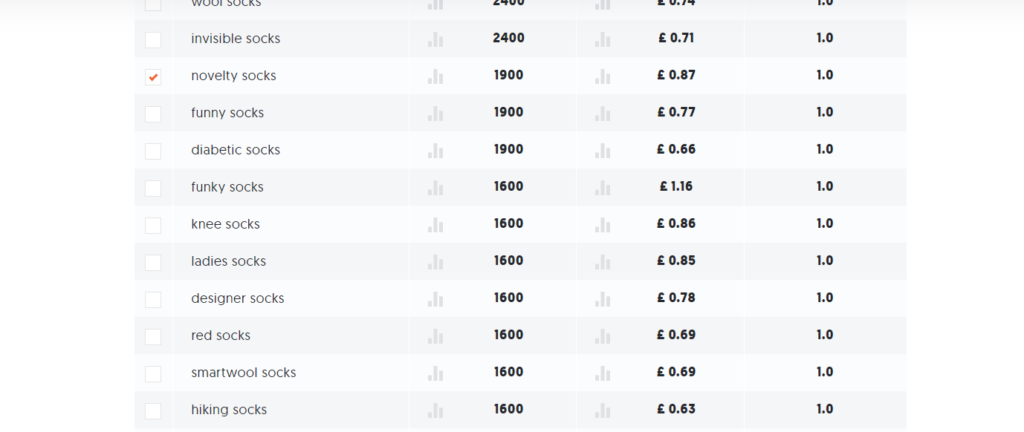
It’s no great secret that people are consuming more than ever before – and ever-increasingly, our spending habits are turning to online shopping. Great news if you’re an ecommerce brand.
However, this also means that the online market is becoming more competitive. Any brand chasing success ultimately has no option but to deliver a consistently better experience than those of their competitors.
What does this have to do with product descriptions? Quite a lot, actually. Some store owners fall into the habit of copying product descriptions from manufacturers and other websites. After all, it’s certainly faster to do it this way.
But it’s also damaging because each description is an opportunity to establish your products as more valuable than comparable rival products. Other brands settle for bland or perfunctory copy or don’t pay enough attention to UX or SEO considerations.
When you consider that most purchasing decisions are emotional, it makes sense to put the time into crafting something persuasive. And on top of that, there are factors like SEO to think about – SEO is arguably the most effective way to bring relevant traffic to your store.
Here are the steps you need to take to write a high-performing ecommerce product page.
Translate features into benefits
When you write about a product, you’ll have more success if you translate its features into benefits for the customer. In the end, it really isn’t much about the what – it’s mainly about how the feature will add to their lives and why it’s so essential.
Here’s a tip: don’t assume that visitors are just as knowledgeable about your products as you are. This is particularly true if you’re selling anything technical. A tangle of jargon and product specifications does nothing for the average consumer.
Instead, focus on the advantages that the product endows you with, whether due to its features or its cultural cachet (often the case with style items). This is what will ultimately compel customers to convert. Here’s an excellent example from Apple that does exactly this:

This chip is all about performance, which makes everything fast. That’s the benefit. Without that part of the heading, it wouldn’t be a very effective highlight. Apple achieves such success through targeting the broad consumer market with accessible technologies and interfaces, and the “A10 Fusion chip” with no simple context wouldn’t have meant anything to most readers.
Align everything to your brand
Staying on the Apple example, you’ll never find a feature on an Apple product page that doesn’t aim for a premium feel. Everything stresses precision engineering, top-quality parts, and unbeatable production values, and features superlatives wherever possible.
What springs to mind when you think of Apple products? Most likely a set of qualities such as high-end, intuitive, stylish, and (most likely) expensive.
The reason that the brand can so readily embrace that fourth quality is that it justifies it using the three preceding it and spins it as contextually cheap (with Apple products being so spectacular that fair prices would actually be much higher, or so the narrative goes).
And these qualities that have been established over time by specific products are now strongly linked to the brand itself, which gives the Apple marketing team incredible power.
Every Apple product page will have finely-polished copy, yes, but what of marketing banners and promotional images?
Put up an image of a new Apple product with the Apple logo on a billboard and you won’t need an explanation or any context. The logo will be enough. Anyone seeing it will instantly know what to expect from the product, even if they don’t yet know what it does.
Now that is branding power.
When writing your product pages, make a similar effort to keep everything in line with whatever you want your brand to be known for, because over time that consistency will influence your brand awareness. Phrase everything very carefully to place emphasis on your biggest brand strengths – are you funny, or affordable, or exclusive? Roll with it.
Use simple sales-focused copy
When writing copy for the web, clarity is the number one goal. If you think most people are going to read everything on a page, you’re wrong. We’re impatient and easily distracted, not all that dissimilar from children flipping through cartoon channels on a Saturday morning.
To get your message across effectively, make your descriptions clear and easy to read. Put important information right at the start. Keep things short – words, sentences, paragraphs. Imagine your reader is in a hurry and only has a few moments to get the gist of what you’re saying. Wordy sentences don’t belong here.
Trying to sound intelligent with sesquipedalian words (see?) won’t do you any favours because people aren’t coming to your website to read challenging literature. Instead, write as if you’re describing the product to a friend or family member. Use headers and bullet points to make information scannable and run it through a readability checker when you’re done (you can find plenty of handy tools here).
After all, what’s the point of your product text? To sell your products, obviously.
That’s it. Not to impress people with your eloquence. Not to make readers laugh (at least, not inherently). Not to make yourself feel like an accomplished writer. Nope – it’s all about the money. Make people want to buy your product, give them an opportunity to buy your product, and sell them your product before they change their mind. It’s a business!

Take a look at how Hiut Denim exemplifies the no-muss-no-fuss approach. The product copy is about the product — what it is, what it involves, and why you should buy it. The confidence of the writer in the quality of the jeans shines through and proves very reassuring.
Overcome questions and doubts
Shopping online can feel a little risky because we don’t have the luxury of experiencing the product in front of us. Naturally, visitors may have doubts when deciding whether to buy from you.
The best way to overcome them is to address them head-on in your product descriptions. You may not remove them entirely – but you may minimise them enough to convince someone that it’s worth hitting ‘buy now’.
Identify all of the possible concerns that might push someone to opt against buying your product, then meaningfully address each one. For example, someone might be reluctant about buying an item of clothing because they’re worried that it might not fit. In which case, you could clearly offer a 30-day money-back guarantee with no return charge and easy Amazon locker collection.
To get a broad look at common concerns, take a look at leading ecommerce sites and review their FAQs.
Sometimes people have doubts borne of more general concerns, such as whether they should be spending that much money on that kind of product, or what their friends might think of their decision. Social proof is perfect for alleviating this kind of doubt. By including testimonials and case studies from previous customers, you can add a lot of credibility to your products.
You don’t even need to cherry-pick the positive reviews since the occasional negative review (provided it’s placed into context) will do far more to demonstrate the legitimacy of feedback than it will to make the product seem less appealing.
Focus more on getting extensive in-depth reviews from people whose perspectives mirror that of your target market, as their comments will be much more convincing to other readers.
Check out how 99designs does it. You get a clear look at a strong overall review, but it’s notably not 5, hitting a still-remarkable 4.7. And it isn’t a manipulative trick – you can scroll down the page to find the less-than-glowing reviews because they’re fully available to view. Because there are negative reviews present, the positive reviews actually feel legitimate.
Optimise content for search engines and users
Before you start writing, you need to know what keywords people are using to search for your products. You may find it’s not what you expected. Keyword research should be your starting point – luckily, lots of tools exist to make this relatively easy for you.
Paid tools like Moz, Ahrefs, SEMrush, and Majestic all do the job very well, but if you’re on a budget, you can get away with using a free keyword suggestion tool like Ubersuggest. Simply input your keyword and it’ll fire off suggestions, along with search volume, cost per click (CPC) and competition. Let’s take ‘novelty socks’ as an example:

This result shows us that ‘novelty socks’ gets 1,900 searches per month – as do ‘funny socks’ and ‘funky socks’, which would also work in this context. Remember, variation is key: Google tells us that keyword stuffing is a sin.
However, these keywords are also quite competitive (the closer the competition is to 1, the more competitive the keyword). You should still include them and look for ‘sweet spot’ long tail keywords where there’s less competition, such as: ‘socks with cute designs’, ‘quirky dress socks’, ‘goofy christmas socks’.
In addition, follow these tips to give your product pages the best chance of ranking well:
- Optimise your title tags and write compelling meta descriptions
- Optimise your image alt tags
- Use keyword-rich headers to break up the copy
- Write unique descriptions – don’t steal from other websites
- Link to internal pages elsewhere on your site
Beyond keywords and ‘optimisation’, though, you shouldn’t spin off into whatever phrasing you feel like. The whole point of keywords is that you hit upon the terms being used by the people you’re trying to reach (even getting down into major regional differences), and you should also try to hit upon the tone they use, bringing it into alignment with the brand qualities you’re trying to communicate overall.
Here’s an example: if you’re selling toys, and you mention all the most important toy-related keywords, but all of your copy outside of those keywords is aimed at an adult level of comprehension, it won’t work very well.
Sure, most of the buyers will be adults, but they’ll want to get input from their kids about what toys they’re looking for. It’s doubtful that you’re going to do much to entice a toddler’s interest if you’re using language far above their literacy level.

Take a look at this example from The Entertainer. Notice the simple text and the enthusiastic tone. I particularly like how the bold text clearly encapsulates the important takeaways, providing easy options for gauging interest by telling a child it has ‘sharp teeth and claws’ and is ‘fully poseable’. It’s basic but well-written copy that works for adults and kids alike.
Appeal to the reader’s imagination
Research tells us that when we hold a product in our hands, we want it more. When you’re operating online, this isn’t an option. Only through words and images can you help readers to imagine what it would be like to touch and own your product, something that will go some way towards offsetting that lack of tactile information.
You can do this by painting a scene. For example, if you sell ski jackets, you might describe the experience of enjoying crisp winter’s day out on the ski slopes while feeling comfortable and well-insulated.
The copy needs to be strongly experiential – not just about what’s happening in the scenario, but about how it would make someone feel. That way, the reader can easily empathise with the subject of the story.
Storytelling can also be very powerful – descriptions don’t need to be dry and boring. They can even be fun! Sprinkle active verbs and choice sensory adjectives through your copy like glitter on a tray of cupcakes. And yet, keep in mind that going overboard on the adjectives can also make you sound insincere. It’s all about getting the balance right and showing genuine enthusiasm.

If you want to see this kind of thing in action, check out Firebox (see above). Its copy is always vivid and playful, building off rich imagery to establish silly little scenarios that remind you of your everyday annoyances and make you want to buy whatever odd items they’re peddling.
If you’re really creative, you can use this kind of storytelling to tie your product pages together. It’s cross-pollination – mention a product in the scenario for another product on a separate page and get people thinking about the prospect of owning both of them. Think of it as the ecommerce equivalent of Nick Fury tying together the various films that led up to The Avengers.
Your handy product checklist
Let’s assume for a moment that you’re writing some fresh product pages or reworking some existing product pages. You could probably benefit from a convenient checklist recapping everything we’ve looked at so far, right?
Good idea! Here’s what you need to check:
- Are you focusing on the benefits?
- Are you using accessible language?
- Are you showing your brand strengths?
- Is the content scannable and digestible?
- Are you answering likely questions?
- Is there substantial social proof?
- Are you optimising for SEO?
- Do your tone and style suit your audience?
- Are you telling an experiential story?
If you can do just some of these things, you’ll be able to improve your copy. If you can do all of them, you’ll have to fend off buyers with a stick (possibly).
Your product pages are arguably the most important pages on an ecommerce website, serving as the critical junctures that turn hungry users into satisfied customers. If you only optimise one aspect of your site, make it your set of product descriptions – give your copy some love, and you never know how effective it might become.
Was this article helpful? Leave a comment below.
